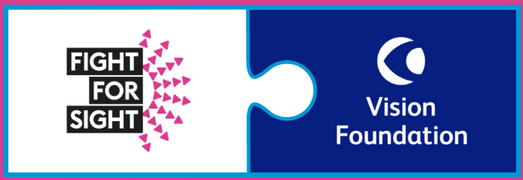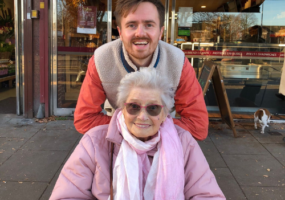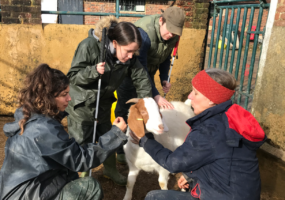UK employers must act now to tackle the rising tide of unemployment for blind and partially sighted people, says Lord Blunkett, Vice President of the Vision Foundation as the charity launches See My Skills, its plan for breaking the cycle of unemployment among the visually impaired community.
“The statistics are very disturbing,” says Lord Blunkett. “Unemployment contributes hugely to the costs of sight loss in the UK, which is estimated to be £28 billion a year – more than heart disease, cancer and stroke combined[1].”
He continues, “Blind and partially sighted people are hidden victims of discrimination. Recent research found that 23% of employers say they are not willing to make adaptations to employ someone with visual impairment[2], despite legal obligations and the technological and other support available. We need immediate action from the public, private and charitable sectors to change this shocking situation.”
Sight loss employment statistics:
- Only 27% of working age blind or partially sighted people are in work[3], compared to 51% of disabled people and 75% of the general population[4]
- Only 40% of employers are confident their recruitment processes are accessible to blind or partially sighted people[5]
- 90% of employers state that it would be “difficult” or “impossible” to employ a visually impaired person3
“It doesn’t have to be like this,” explains Vision Foundation chief executive Olivia Curno. “Blind and partially sighted people do the vast majority of the jobs that sighted people do. They might do them a little differently, using specialist technology or admin support – but they do them successfully. The technology and the processes exist – including the Access to Work programme operated under the Department for Work and Pensions; it’s attitudes that need to change.”
The Vision Foundation, a leading provider of funding and support to organisations working with blind and partially sighted people, celebrates its 100th anniversary this year. See My Skills is part of the charity’s centenary campaign to change the employment landscape for people with a visual impairment. Research was commissioned from Birmingham University’s Department of Disability, Inclusion and Special Needs to identify the barriers to employment and to help focus the charity’s grant-making strategy.
The report identifies where changes in government policy and businesses’ perception of employing partially sighted people are needed to create “a level playing field for sight loss employment”. Sight loss charities can support this by improving knowledge, tackling negative attitudes and presenting positive evidence of ‘what works’ and why.
See My Skills, is supported by Legal & General and aligns with the company’s commitment to embed diversity throughout its business. Explains Yvonne Buckell, Controls & Governance Director, Legal & General Retirement Retail, “At Legal & General we believe diversity strengthens us and are proud to be a vibrant business that values and embraces difference. We are enormously proud to have supported this Vision Foundation report which demonstrates how together, we can change employment outcomes for blind and partially sighted people.”
The Birmingham University research found that the Access to Work employment support programme and Jobcentre Plus are valued by blind and partially sighted people but their efficacy could be greatly improved with relatively simple changes.
“Access to Work needs to be more accessible and better promoted,” says Olivia Curno. “Around 5,000 blind and partially sighted people used it last year, that’s less than 2% of those who are eligible[6]. The application, assessment and claims process can be slow and difficult for people with a visual impairment without sighted help. Feedback on Jobcentre Plus is that blind and partially sighted people are often told they’re “Better off on benefits” when looking for work, whereas better staff awareness of what is actually possible with technology could be transformational. “
Sight loss charities have an important part to play by focusing on positive news and promoting practical solutions, while working together to highlight gaps in evidence and service provision. They also have an important leadership role in offering employment, internships and voluntary work placements to blind and partially sighted people and sharing their expertise as accessible employers.
However, the Vision Foundation’s main challenge is to businesses, where negative perceptions and a lack of understanding of what it means to employ blind and partially sighted people remain a barrier to recognising and benefiting from their expertise, talents and skills.
Dr Amit Patel, Vision Foundation trustee and disability rights campaigner, author and motivational speaker, was a 32-year-old medical doctor when he suddenly lost his sight and has personal experience of employer prejudice. “When I applied for almost 100 jobs disclosing my sight loss, I heard nothing. But when I applied for ten without the disclosure, I got called back for interviews.” He continues, “I think many people see the white cane and the guide dog and not the person. Just as many employers see the disability and not the skills. This is why I am so glad to support the Vision Foundation’s See My Skills campaign and be part of the drive to transform employment opportunities for blind and partially sighted people.”
To download “See My Skills: Breaking the cycle of unemployment for blind and partially sighted people” please follow the links below:
See My Skills Employment Briefing Report July 2021
See My Skills Employment Report July 2021 (Word Version)
[1] Luengo-Fernandez, R., Leal, J., Gray, A. 2012. UK research expenditure on dementia, heart disease, stroke and cancer: are levels of spending related to disease burden? European Journal of Neurology 2012, 19: 149-154
[2] Slade, Edwards and Crawley (2020) Employment for blind and partially sighted people in 2019. RNIB.
[3] Slade, Edwards and White (2017). Employment status and sightloss. RNIB
[4] ONS Labour market data (April 2021).
[5] Roberts, S, C Heaver, K Hill, J Rennison, B Stafford, N Howat, G Kelly, S Krishnan, P Tapp and Thomas (2004), Disability in the Workplace: Employers’ and Service Providers’ responses to the Disability Discrimination Act in 2003 and preparation for 2004 changes, DWP, report No 2002
[6] Melville D, Stevens C, Vaid L, 2015. Access to Work – Cost Benefit Analysis. RNIB.


